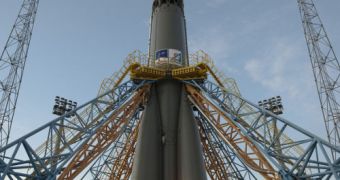Officials from the European Space Agency (ESA) announce that the Soyuz ST-B rocket which was supposed to take the first two Galileo satellites to orbit will not be launching today, October 20. At this time, no official new data has been released for the launch.
Experts say that the takeoff countdown was stopped while the rocket was being refueled. Engineers at the Kourou Spaceport, in French Guiana, South America, detected an anomaly in the third stage of the Russian-built delivery system.
The procedure was immediately stopped, and mission controllers eventually decided to scrap the attempt altogether. They explained to the media that a new launch date will be announced today. However, there is no way of knowing when ESA will be sure of such a date.
Both the Soyuz rocket and the twin Galileo satellites it carries have now been placed in safe more, and are still standing erect at the launch pad. The installation has been constructed at ESA's facility by Russian engineers.
The Galileo In-Orbit Validation (IOV) satellites – designated PFM and FM2 – are encapsulated inside the Fregat-MT upper stage, which itself lies on top of the rocket's third stage. All tests that are carried out before the planned launch – on the spacecraft and their rocket – were completed successfully.
At the same time, it's also worthy to note that this is represents the first time a Soyuz rocket will be launched outside the former Soviet Union. The only two spaceports that support this type of rocket are the Baikonur Cosmodrome, in Kazakhstan, and the Plesetsk Cosmodrome, in Russia.
ESA decided to opt for the Russian Soyuz for two primary reasons. The first is that the design, though old, is extremely efficient and has a high success rate. The second is that this delivery system complements ESA's existing family or rockets – Ariane and Vega – very nicely.
After the two IOV satellites are deployed, ESA expects to put an additional two Galileo spacecraft in orbit next year. After this initial stage of the project is completed, an additional 26 satellites will be deployed, so that the European agency can achieve global coverage.

 14 DAY TRIAL //
14 DAY TRIAL //